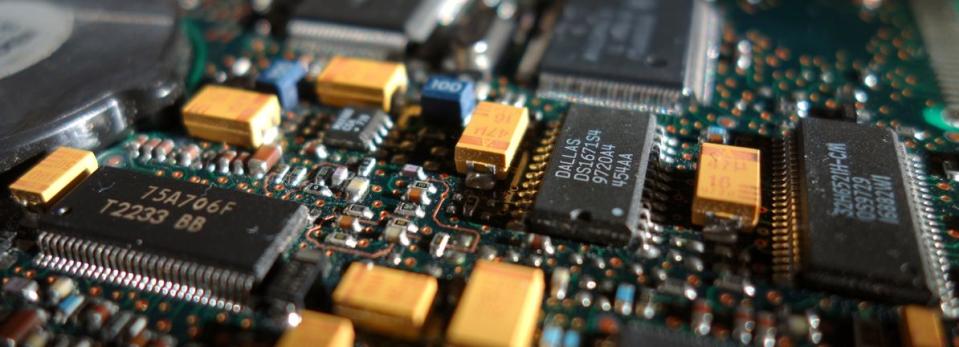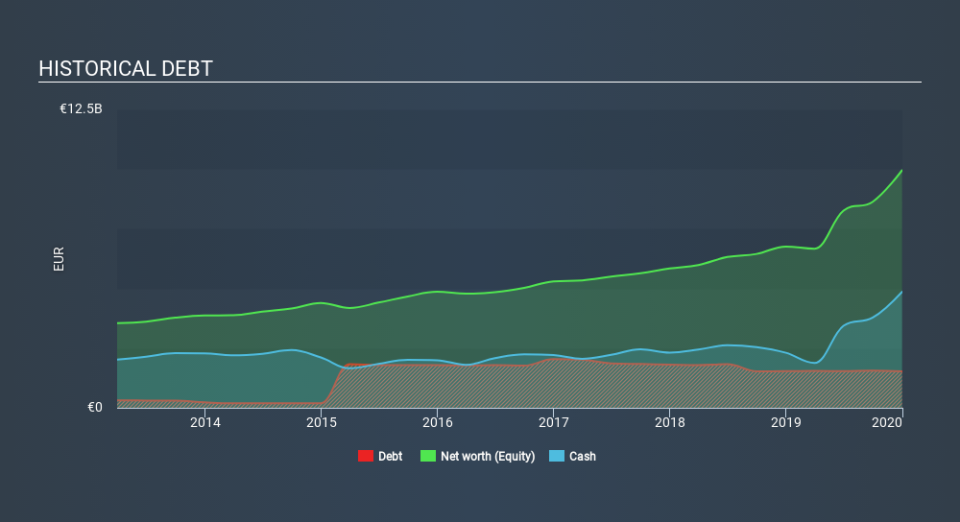These 4 Measures Indicate That Infineon Technologies (ETR:IFX) Is Using Debt Reasonably Well

Some say volatility, rather than debt, is the best way to think about risk as an investor, but Warren Buffett famously said that 'Volatility is far from synonymous with risk'. It's only natural to consider a company's balance sheet when you examine how risky it is, since debt is often involved when a business collapses. We note that Infineon Technologies AG (ETR:IFX) does have debt on its balance sheet. But the real question is whether this debt is making the company risky.
When Is Debt A Problem?
Debt assists a business until the business has trouble paying it off, either with new capital or with free cash flow. If things get really bad, the lenders can take control of the business. However, a more common (but still painful) scenario is that it has to raise new equity capital at a low price, thus permanently diluting shareholders. Having said that, the most common situation is where a company manages its debt reasonably well - and to its own advantage. The first step when considering a company's debt levels is to consider its cash and debt together.
View our latest analysis for Infineon Technologies
What Is Infineon Technologies's Debt?
The chart below, which you can click on for greater detail, shows that Infineon Technologies had €1.53b in debt in December 2019; about the same as the year before. But it also has €4.86b in cash to offset that, meaning it has €3.33b net cash.
How Healthy Is Infineon Technologies's Balance Sheet?
According to the last reported balance sheet, Infineon Technologies had liabilities of €1.99b due within 12 months, and liabilities of €2.68b due beyond 12 months. On the other hand, it had cash of €4.86b and €987.0m worth of receivables due within a year. So it can boast €1.18b more liquid assets than total liabilities.
This surplus suggests that Infineon Technologies has a conservative balance sheet, and could probably eliminate its debt without much difficulty. Simply put, the fact that Infineon Technologies has more cash than debt is arguably a good indication that it can manage its debt safely.
But the bad news is that Infineon Technologies has seen its EBIT plunge 15% in the last twelve months. We think hat kind of performance, if repeated frequently, could well lead to difficulties for the stock. When analysing debt levels, the balance sheet is the obvious place to start. But it is future earnings, more than anything, that will determine Infineon Technologies's ability to maintain a healthy balance sheet going forward. So if you're focused on the future you can check out this free report showing analyst profit forecasts.
But our final consideration is also important, because a company cannot pay debt with paper profits; it needs cold hard cash. Infineon Technologies may have net cash on the balance sheet, but it is still interesting to look at how well the business converts its earnings before interest and tax (EBIT) to free cash flow, because that will influence both its need for, and its capacity to manage debt. In the last three years, Infineon Technologies's free cash flow amounted to 29% of its EBIT, less than we'd expect. That weak cash conversion makes it more difficult to handle indebtedness.
Summing up
While we empathize with investors who find debt concerning, you should keep in mind that Infineon Technologies has net cash of €3.33b, as well as more liquid assets than liabilities. So we don't have any problem with Infineon Technologies's use of debt. The balance sheet is clearly the area to focus on when you are analysing debt. However, not all investment risk resides within the balance sheet - far from it. To that end, you should be aware of the 4 warning signs we've spotted with Infineon Technologies .
If, after all that, you're more interested in a fast growing company with a rock-solid balance sheet, then check out our list of net cash growth stocks without delay.
If you spot an error that warrants correction, please contact the editor at editorial-team@simplywallst.com. This article by Simply Wall St is general in nature. It does not constitute a recommendation to buy or sell any stock, and does not take account of your objectives, or your financial situation. Simply Wall St has no position in the stocks mentioned.
We aim to bring you long-term focused research analysis driven by fundamental data. Note that our analysis may not factor in the latest price-sensitive company announcements or qualitative material. Thank you for reading.

 Yahoo Finance
Yahoo Finance 
